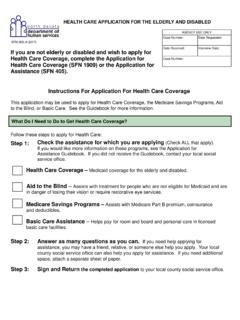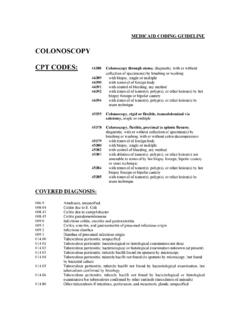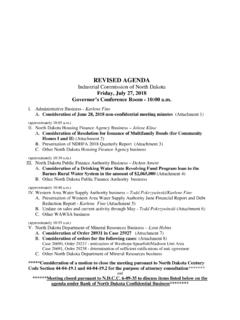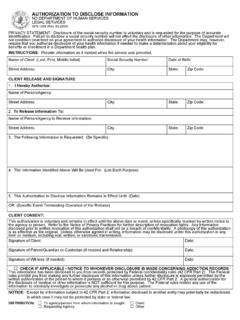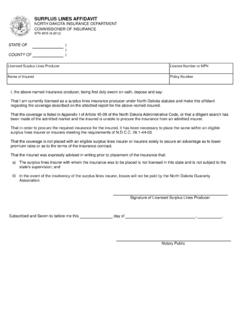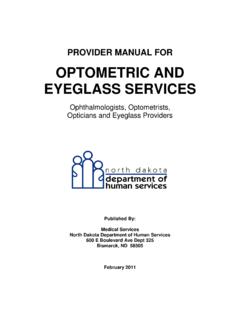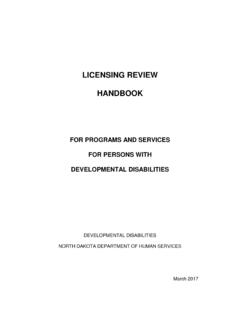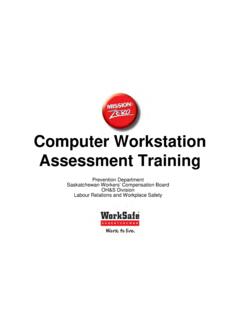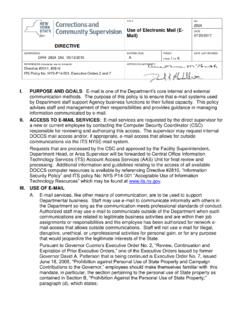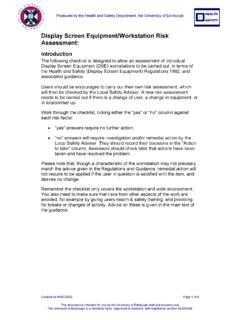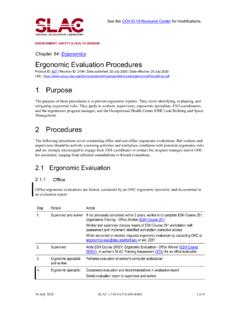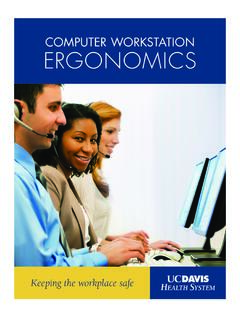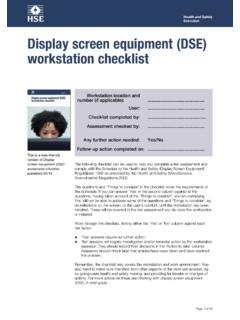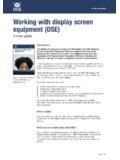Transcription of Office Ergonomic Assessment - North Dakota
1 Office Ergonomic Assessment Worker Name: Dominant Height: Type of corrective lenses: Hand: Ft. In. Employer: Date: Assessor: Percentage of time by function (total of 8 options = 100%) Diagram of workstation layout _____ % Data entry/retrieval _____ % Writing _____ % Word processing/editing _____ % Filing _____ % Using mouse _____ % Telephone _____ % 10-key/adding machine _____ % Other Hours/day at this workstation : Floor surface: Action Item Item Description/Comments/Recommendations Priority*. (check if YES). CHAIR. MONITOR. KEYBOARD. MOUSE. TELEPHONE. WORK AREA. DESK/. WRITING. SURFACE. OTHER. * Priority Levels: High (immediately), Medium (within 30 days), Low (for consideration). To understand the best way to set up a computer workstation , it is helpful to understand the concept of neutral body positioning. This is a comfortable working posture in which your joints are naturally aligned.
2 Working with the body in a neutral position reduces stress and strain on the muscles, tendons, and skeletal system and reduces your risk of developing a musculoskeletal disorder (MSD). The following are important considerations when attempting to maintain neutral body postures while working at the computer workstation : Hands, wrists, and forearms are straight, in-line and roughly parallel to the floor. Head is level, or bent slightly forward, forward facing, and balanced. Generally it is in-line with the torso. Shoulders are relaxed and upper arms hang normally at the side of the body. Elbows stay in close to the body and are bent between 90 and 120 degrees. Feet are fully supported by floor or footrest. Back is fully supported with appropriate lumbar support when sitting vertical or leaning back slightly. Thighs and hips are supported by a well-padded seat and generally parallel to the floor.
3 Knees are about the same height as the hips with the feet slightly forward. Regardless of how good your working posture is, working in the same posture or sitting still for prolonged periods is not healthy. You should change your working position frequently throughout the day in the following ways: Make small adjustments to your chair or backrest. Stretch your fingers, hands, arms, and torso. Stand up and walk around for a few minutes periodically. These four reference postures are examples of body posture changes that all provide neutral positioning for the body. Upright sitting Declined Sitting The user's torso and neck The user's thighs are inclined are approximately vertical with the buttocks higher than the and in line, the thighs are knee and the angle between the approximately horizontal, and thighs and the torso is greater the lower legs are vertical. than 90 degrees. The torso is vertical or slightly reclined and the legs are vertical.
4 Reclined Sitting Standing The user's torso and neck The user's legs, torso, neck, and head are straight and recline are approximately in-line and vertical. between 105 and 120 The user may also elevate one foot on degrees from the thighs. a rest while in this posture. Reclined seating is best suited for non-intensive tasks such as reading or talking on the telephone. workstation Arrangement Arrange the workstation so that objects that are frequently used are located in the green zone to minimize reaching. Objects that are used less frequently should be located in the yellow zone. Only minimal work should be performed in the red zone.

